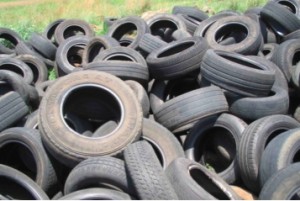Archives
Presenting a New Business Opportunity for All Tire Shop Owners: Improve Your Inventory With Our Online Database
Did you know that throughout North America there are millions of quality pre-owned tires for sale? There are plenty of potential customers who are looking to purchase affordable, quality tires but aren’t sure where to search. If you are a tire shop owner, auto recycler or car dealer, you know that you have tires stored in every nook and cranny of your lot and may not know what to do with them.
We have come up with a much-needed solution to your problem. We are offering a long overdue service for those of you in automotive sales, tire sales, and the repair industry. You can now use our online database to manage your tire inventory. But it doesn’t stop there! The consumer will be allowed to search for a specific tire, locate it at your store, and purchase it online. It’s the perfect solution, and it’s free advertising!
Our Database Gives Small Business Owners The Opportunity For Better Business
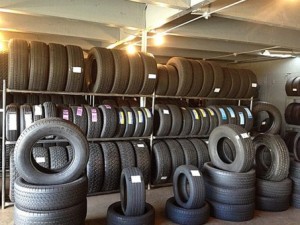
As a small business owner, you know that every minute counts. By using our online database, you will instantly become more organized and efficient! You and your staff can utilize each moment effectively because you won’t have to constantly check in the back to see if you have a tire laying around, wasting precious time.
Your business will see more tire sales and improved customer satisfaction when you can tell your consumers that you have product in stock with confidence. Your staff will have the time to be attentive towards each customer because they will not be running to the back to search for parts.
By keeping all of your tire inventory stored in one place, you will know what you have in house at all times. If something goes missing, you will be the first to know. Keeping track of your tires prevents theft – just another bonus to using our database!
For one monthly fee, you can organize all of your tire inventory and vastly improve your business. Try it risk-free for 30 days!
Customers Are Raving About Our Online Database!
“We’ve been looking for a low priced way to keep track of our new and used tires. We tried a couple of the others and found them too complicated to use. This one fit our bill just fine, and it has more features to it as well.”
Barry Helms, NY
What about YOU?!
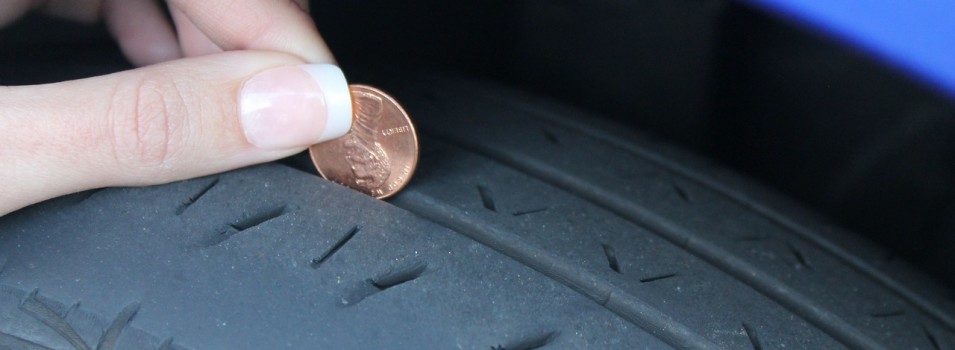
What Your Customers Need To Know: Percentage of Tire Tread Depth
No matter what time of the year it is, there’s always the possibility of inclement weather. If you get behind the wheel of a vehicle any time during rain or snow, you will be faced with driving hazards.
Depending on your driving speed and the road conditions, stopping on wet roads can take up to four times the normal force required to come to a halt. And if your tires are worn… you risk the chance of hydroplaning or skimming over the surface of the road with little or no grip.
Sadly, there are many people using the road while driving on worn tires.
You don’t want to join that vast majority of drivers who truly do not understand the dangers of driving on low tread tires.
Distressed tires, particularly bald ones can be fatal on wet roads, where the grooves are not deep enough to channel water out from beneath the treads.
The end-result is hydroplaning, where the tread wears and forces the tire to skim the water’s surface and the vehicle reacts to the steering wheel.
Snow grip and wet weather braking add additional wear bare tires.
Tread Depth
Tread depth is a perpendicular measurement between the very top of the tread rubber to the base of the deepest grooves of the tire.
In the US, tread depth is quantified in 32nds of an inch. You can calculate your tire’s tread depth by using a depth gauge.
Typical new tires usually begin with 10/32″ to 11/32″ of first tread depth.
Winter/snow tires and light truck tires usually are deeper. For light truck tires, that depth depends on the tire’s tread kind, varying from Highway Rib, Highway All-Season, Off-Road Maximum Traction or Off Road All Terrain.
Tires are lawfully “worn out” in the majority of States when they reach 2/32″ of remaining tread depth. By way of example, a typical tire that begins with 10/32″ of original tread depth has only 8/32″ of usable tread depth.
Manufacturing companies have set a number of horizontal bars at the bottom of the grooves to make bald tires easier for owners to see.
The bars become flush when the depth of the groove gets to 2/32 of an inch.
Since tire tread provides grip to prevent a vehicle from slipping and skidding, a tire is bad and ought to be replaced when the tread is worn down to 1/16th of an inch.
Not only is it incredibly important for your driving safety to make sure that your tires have good treads, but it is also essential to be sure your tires are correctly inflated.
If all of this seems like too much to handle, then may want to consider getting a tire inventory management to assist you in checking up on your tires. It cannot be stressed enough. If you drive on tires that are bald or significantly under-inflated, you’re risking an injury to yourself, your passengers, and other motorists on the road.
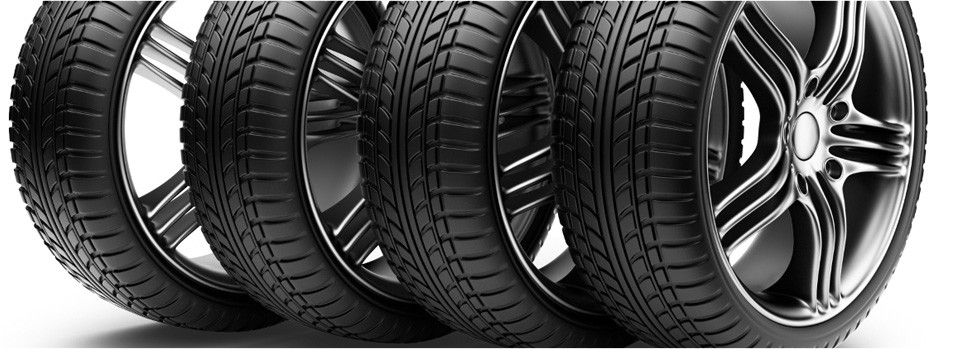
What Your Customers Need To Know: Tire Types
How well do you know your tires? Are you able to teach your customers about the different types of tires out there, and how important it is to choose the right ones for their vehicles?
In this article, we are going to explain the different types of tires and the functionalities for each of them. Should a potential customer ask you to tell the difference between each tire, you’ll not only be able to give him a well-informed answer but, you can show him what the best choices would be for his particular vehicle.
Shall we get started?
Despite improvements in longer-lasting tires, tread life will vary depending on the type of tire, car, driving aggressiveness, as well as road and weather conditions.
In most cases, you’d have to change your tires more or several times throughout the life of an average vehicle. As the familiar saying of that old adage, nothing lasts forever!
Responsible driving and appropriate care can optimize the mpg in your tires. Tire tracking software can usually tell when the tires need replacing, well ahead of the time of the mandated treadwear indicators.
Tire Types
In regards to changing your tires, it is important to learn about your options and to understand what’s presently in your car or truck. Usually, you will need replacements that are not only similar but also fits the size as well as speed rating. From that point, you may use a tire inventory system to seek out areas that are more important to you, including handling, braking, ride comfort, and sound.
All-Season Car Tires
All-season tires come in different sizes and fits everything from small cars to light-duty SUVs and pick-ups. They’re for motorists who need year round grip, long tread wear, and of course, a comfortable ride. Nevertheless, all-season tires generally lack traction and the exact handling of performance tires.
Performance All-Season Car Tires
These tires supply year-round traction tuned for enthusiastic driving. They have a speed rating that is higher than the standard all-season tires, and they usually provide better handling and braking than all-seasons as well.
Ultra-High Performance Tires
All summer and season ultra-high performance tires are usually fitted to sporty vehicles or upscale sedans. All season UHP tires are made to supply great handling and responsive steering in dry and wet states, but both the ride comfort, as well as the tread wear are typical compromises. UHP tires aren’t meant for cold weather and will not traction in icy or snow-covered conditions.
All-Season Truck Tires
All-season truck tires are made for the heavy loads pick-up or an SUV. All these are well-rounded tires made to perform well in varying conditions.
All Terrain Truck Tires
Engineered for heavy-duty use, all terrain truck tires are appropriate for paved roads. The broken tread is made to provide added grip on white and unpaved roads.
Winter/Snow Tires
Winter/snow tires offer outstanding traction corner in a cold, inclement weather. However, they generally have more rapid treadwear than all-season tires as the tread is made specifically to bite into ice and snow, and the rubber is invented to remain pliable at freezing temperatures. Additionally, winter/snow tires usually cease longer than all-season tires on roads that are cleared.
To help your customers make the best decision, using a tire inventory software can be of tremendous help. Be sure to check out our tire solution to see how beneficial it will be to you only if you implement the software today.
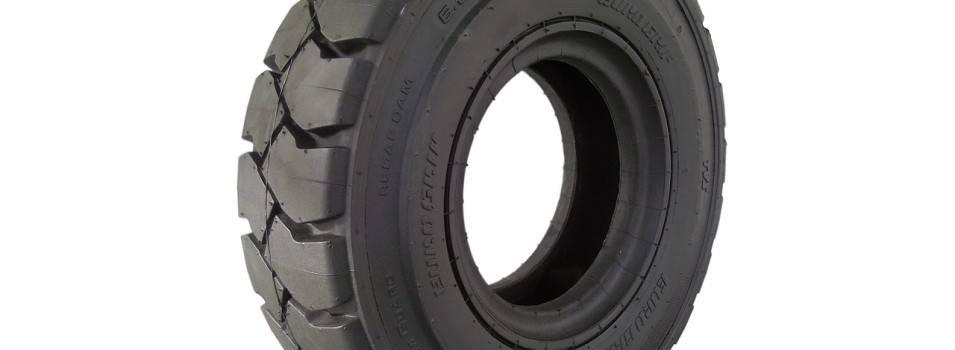
How To Tap Into The Used Tire Market
More customers are opting for ‘gently used’ tires than ever before. People are looking for a way to save money as well as to give back to the environment. When it comes to vehicle ownership, one of the best ways to do so is to use recycled tires. Of course, if you already have a large used tire inventory, you may simply be wondering how to tap into the market fully.
One of the best ways to make the most of your in-house inventory is to invest in some form of management software system. Many businesses are now finding that it takes more than a clipboard and a few staff members to keep track of a tire inventory. An easy replacement for these outdated organization tactics is a tire inventory software.
How Tire Management Software Can Make A Difference
Taking control of your inventory is key to ensuring you can effectively fill orders and keep customers coming back to your business. After all, if customers call you looking for a certain tire size and you’re not 100% sure whether or not you have it, you’re going to look like an amateur, to put it lightly.
Utilizing a tire inventory software can make the difference between building a successful tire business and failing right out the gate. Modern technology has transformed the market. Nowadays, when you set up a business, you are almost required to have software ready to go. If you invest in the right software, you’ll experience far greater profits in the long run.
4 Tips To Tap Into the Tire Market
Tip #1. Evaluate your competition.
The more competition you have in your area, the harder it will be to tap into the market. Do your research and define who your competition is, whether or not there are several well-established tire shops already up and running, and then go from there.
Tip #2. Advertise that you accept donations.
Selling used tires can be a tricky business. You may find it difficult to keep your inventory stocked. To help yourself out, advertise that you accept donations for your inventory. You’d be surprised by how many acceptable tires you’ll have donated.
Tip #3. Set competitive pricing.
Obviously, selling used tires sets you up for some serious competition. Not only do you have to compete with brick and mortar stores, you also have to compete with online retailers. Pricing is, therefore, critical. You don’t want to set your prices too low that you undercut yourself, but you also don’t want to set them too high that no one will purchase them. Once again, research comes into play. Analyze the market to determine what pricing will work.
Tip #4. Invest in the right tools.
Another important tip is to use the right tools. We already mentioned the importance of a tire inventory software, but we want to reiterate how crucial it is to invest in these tools. Tire inventory management is made easier with the right tools. Your used tire inventory will greatly benefit when you place importance on organization.
It quite literally pays to make a business plan centered on technology. If you want to make the most of your business, consider investing in the right software and discover how successfully your business can be.
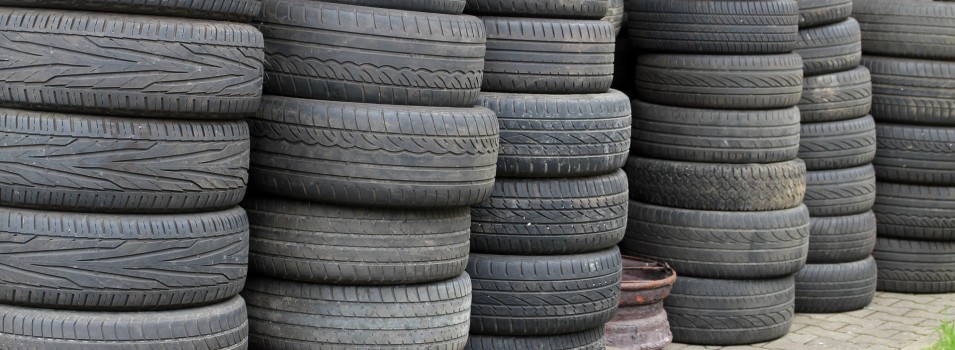
Efficient Tire Management For Tire Shops
We know that your tire inventory is one of the most essential parts of your company. Truth be told, most tire shops, auto recyclers, and car dealers still use traditional ways to manage their tire inventory.
Some tire shops may already be comfortable in writing tire inventory in a sheet of paper or encoding it in an excel file. The problem is that this isn’t the most efficient way to track your tire inventory!
The Traditional Tire Inventory Management is Inefficient
“But it’s been working for us for years. Why change our system?”
There’s nothing really wrong with using a system that works, but efficiency is something that’s hard to get. Even with today’s technology, many tire shops fail to realize that their traditional tire inventory management is becoming more and more inefficient.
Below are the several disadvantages of using the traditional method of managing your tire inventory:
1. Prone to Mistakes
Yes, employees of tire shops may make mistakes when updating tire inventory in a sheet of paper or an Excel file.
2. Inefficiency
Constantly updating your tire inventory, especially when you have several stores, is a tedious and time-consuming task.
3. Higher Labor Expenses
Since people take more time updating your tire inventory across all your stores, you need to higher more employees to fill in your other business needs – increasing labor expenses.
4. Miscommunication
With the traditional method, miscommunication happens. When this happens, you may lose customers and ruin your company’s reputation. You don’t want this to happen!
A Better Way for Tire Shops to Manage their Tire Inventory
Using the power of technology and the speed of the internet, tire shops can now have a cloud-based tire inventory that’s easily accessible anywhere. Perfect for tire shops with multiple stores and those that struggle with the traditional tire inventory management.
Lucky for you, Tire Inventory Solutions can help you manage your tire inventory effortlessly and efficiently! We have developed a software that can cater all the needs of tire shops and it’s working great.
With Tire Inventory Solutions, you can enjoy the following benefits:
• No more input mistakes
• No more miscommunication
• Accessible anywhere
• Increased sales through online exposure
• Reduced labor expenses
• Increased efficiency
• Real time updates
• Hassle-free advertising
• URL link to tire inventory
• Post on Facebook, Craigslist, Ebay, findthetires.com, and more
• iOS and Mobile app for your smartphone or tablet
• No sign up fees
• 30-day trial
• No need to download any software
What Are You Waiting For?
Tire Inventory Solutions is what your company needs! Everything’s all set up, and tire stores just need to upload their tire inventory list to start using the system. Business owners can also advertise their tires online – hassle-free!
Lower your expenses and increase your revenue – we’d love to see you succeed! Tire Inventory Solutions is offering a 30-day free trial; there’s really nothing to lose.
Try our efficient tire management software today! You won’t regret a thing!

What is Hydroplaning?
Hydroplaning refers to the skidding or sliding of cars, especially on a wet surface or road. It occurs when the water encountered by the tires is much more than they can handle, thus losing traction and resulting to skids, loss of steering, power control, and braking.
Because of this, rubber tires were designed to have threads or grooves to help them channel water beneath the tire. These grooves create higher friction, and with such resistance, there is a minimized chance of hydroplaning. Although your tires may be grooved and designed against hydroplaning, it would still be safe to assume there are slim chances that you will still experience skids.
During rainy days, every driver must be wary especially in the first 10 minutes of light rain. This is when the rain mixes with the oil and dirt on the road surface that might cause vehicles running very fast (35mph) to skid and hydroplane. Always remember that a car that hydroplanes isn’t only a hazard to the person driving the car, but also to the other vehicles on the road. This can result in serious road accidents.
Here are a few tips anyone can do to make sure you avoid hydroplaning:
1. Make sure you don’t have flat tires and that they are always properly inflated.
Also, make sure your tires have good tread, otherwise there will be less traction, and you will become more prone to hydroplaning.
2. Rotate and replace tires when necessary.
Some tires get worn out pretty easily in some cars, so rotating your tires once in a while could help reduce the damage and give your tires a longer lifespan. Rotate tires for every 3000 miles of a road trip. Also, if you have a front wheel drive vehicle, you must consider tire rotation seriously, since, in this case, front tires get worn out faster and more differently from back tires.
3. When there is ta lot of water on the road or when there is rain, slow down to give your tires friction.
The faster you run, the more likely you are to hydroplane. It’s especially important to go slowly if you see standing water.
4. Stay away from puddles and standing water.
Always look out for puddles since the greater the amount of water, the greater the chance to hydroplane. This means you should avoid driving in outer lanes since that is where water usually accumulates. Try to follow the tracks left by the cars before you, since there is a smaller probability of water building up in areas experiencing full tire action.
5. Turn off cruise control.
You are better off without cruise control during rainy days, especially if it’s heavy downpour. Turning off cruise control will direct your focus to the present and will make you more aware of he surroundings.
6. Avoid hard braking.
If you have anti-lock brakes then you can brake as you usually do, but if you don’t, then make sure you brake in small gentle pumps. Make sure you don’t lock the wheel, or you will surely skid and hydroplane.
7. Try not to make sharp or quick turns.
Always be careful when taking turns. Doing so sharply will most likely result to hydroplaning since your tires will have less time to gain traction and will therefore skid.
As you can see, your tires play a very critical role in your drive. If you are a tire store, an auto recycler or a car dealer, it is important to know this information so that you can give your customers appropriate recommendations when they choose their tires. Manage your tire business efficiently through an effective and proven holistic system where you can organize, advertise and invoice tires in one easy step. Check out our system and avail of our free trial today!

Tire Maintenance 101
Being well prepared before getting behind the wheel is the cornerstone of being a good driver. Checking gas levels, lights, brakes, tires and more are vital to a safe and pleasant drive.
Today, we’d like to talk about an important feature of your car: your tires. There are many benefits of maintaining your tires properly:
• Tire maintenance should always be on top of your list. Tires are among the most crucial components of your vehicle. Improper tire conditions can cause accidents and injuries
• Tire maintenance helps extend the life of your tires. Longer tire life means you save money by buying tires less often.
• Did you know that under-inflated tires also cost you more fuel? Under-inflated tires have a higher rolling resistance that makes your engine work harder to keep you going at the same speed.
It is recommended that you inspect your tires regularly, especially before driving out. You may overlook less obvious damage without a thorough inspection so be sure to schedule them more often with your local tire shop. Check tire pressure and do regular maintenance routines such as tire rotation, alignment, and visual inspections.
Always check for underinflated or flat tires, since they increase risks on the road. Under-inflated tires do not only increase your fuel usage, but they also provide less traction. During rainy seasons, skidding and sliding are even more likely with worn out or underinflated tires. Make sure you check each tire’s pressure before trips, to save yourself money and reduce the chances of an accident.
Tire maintenance is a serious task – it starts from the tire purchase to regularly servicing the customer. Give your customers an easy way to choose tires online. If you are a tire store, an auto recycler or a car dealer, manage your business efficiently through an effective and proven holistic system where you can organize, advertise and invoice tires in one easy step. Check out our free trial and save on labor costs, increase your sales and make your job easier today!
Safety Tips For Driving
The road is a jungle, they say. As a driver, you should always opt for safety above all else. There are lots of accidents resulting from reckless driving, and you may want to steer clear of all those risks. The question is, how exactly can you prepare for a safe drive? And what are some driving tips you can use to avoid getting involved in an accident? Let us count the ways:
1. Before you go out on the road, always check your tires. They are the ones most usually overlooked but are of the greatest importance since your tires are the only parts of your car directly in contact with the road. You may want to make sure they are properly inflated and are in proper alignment. Not doing so could to get into trouble later.
2. Check your batteries. Make sure the terminals are clean and the connection is tight. A little baking soda will do the trick to clean a dirty terminal, so make sure your batteries are in good condition and well serviced. Driving a car with poor battery invites a breakdown usually at the most inconvenient times.
3. Also, check your fuel level. Running out of fuel is more common than you may think. Fuel gauges are not always entirely accurate; be sure you always have a minimum of one-quarter of a tank of fuel at all times before proceeding on your trip.
4. Check the brakes. There are too many accidents due to break failure. Be sure to have them physically checked by your mechanic. Worn out, damaged or malfunctioning brakes invite disaster.
5. Finally, follow road rules. Respect street lights and stop signs. Don’t tailgate! Leave a two-second gap between you and the car before you. In times when visibility becomes a problem, you should leave a four-second gap, especially during rainy days or foggy conditions.
Use your turn signal indicators. This will let other motorists know what you plan to do and will give them time to decide which way to go. Drive smart and safe. Hasty decisions will result in potential accidents risking your life and the lives of those around you.
If you happen to be a tire store, make sure that you recommend the most appropriate tire for your customer’s needs. With such a wide variety of tire makes and models, It’s important to give them the best advice. Have the information at hand with an easy to use tire inventory system. Try out our new system where you can organize, advertise and invoice your tires in one easy step. Check out all the benefits with our trial and provide that excellent customer service today!

Road Safety 101
Road safety is one thing responsible drivers should (if they already don’t) know about. Knowing what to do in different road situations cuts the line between good and reckless drivers. Road safety should be observed to avoid accidents and crashes. This way, you protect not just your car, but most importantly, your life and others’ as well.
Road safety begins even before you hit the road. You should be aware of certain preparations and inspections you make before deciding your vehicle is in a proper and safe condition. Every driver should do maintenance checks and make sure all parts of the vehicle are responsive and do not malfunction. With this, we reduce the risks of crashes and some unexpected situations in the middle of the road, which will not only cause delay to your travel but also put your life to risk.
Make sure your tires, batteries, brakes, and engine are in good condition. Tires should be properly inflated, and are in proper alignment. Brakes should be responsive, and your batteries and engines clean and working fine. Also, bring a car emergency kit just in case you get stuck in some problems. This way, you are less likely caught unprepared.
Road safety asks that you comply with the rules of the road. Follow guidelines and signs, traffic lights and never ignore pedestrian alerts. Always be aware of your surroundings. Always leave a gap before you and the vehicle before you. You are less likely to bump and involve in a heated argument or worse, a deadly crash.
In case of rainy days and heavy downpour, and also with fog, be sure to slow down to avoid skids and slides. Hydroplaning occurs during rainy season most usually, and you should know that the faster you go, the more prone you are to hydroplane. Make sure you run just fast enough for your tires to gain traction and connect with the road surface.
Always stay on your side of the road. If you ever have to take a turn, make sure you turn on your indication lights so the motorists after you are aware of the direction you’re taking. Remember the signs and things you should do in various road situations, and you are sure to be understood by other motorists and avoid minor crashes. You will also minimize traffic problems by being a responsible driver yourself.
As we mentioned, road safety starts even before you hit the road. This means, everything and anything that is connected to your car should be appropriate for its make. One of the critical element is choosing your tire whether this may be depending on the weather condition or your usage.
If you are a tire store, an auto recycler or a car dealer, it is wise to know what specific tires to recommend to your customers. However, with the many types and brands of car tires, managing your inventory and your database can be a problem. But don’t fret! You now have the option to manage your business efficiently through an effective and proven holistic system where you can organize, advertise and invoice tires in one easy step. All you need to do is to check out our free trial and see how easy it is to cater to your customers with this user-friendly system! Try it today!

